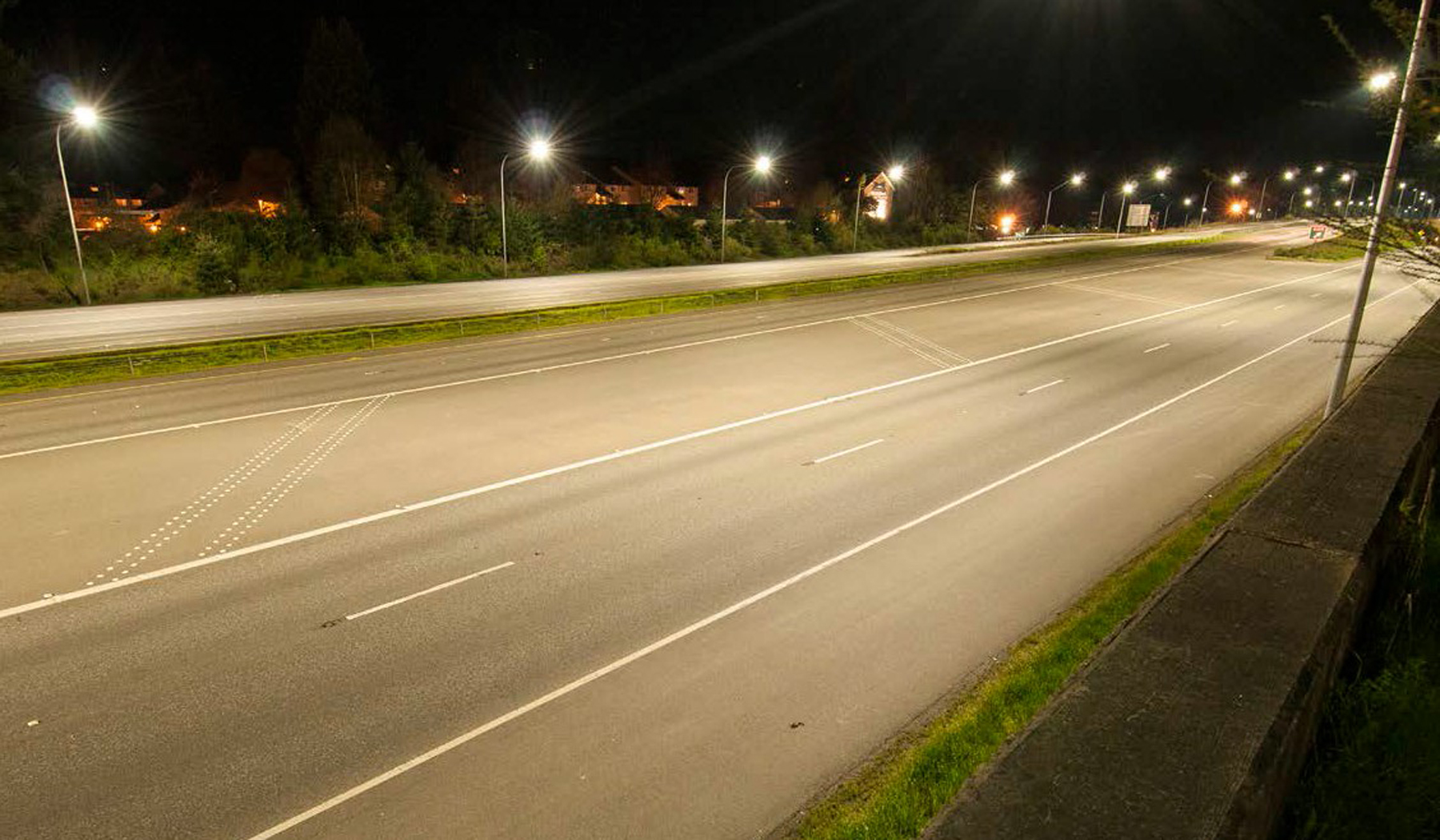WSDOT currently owns and operates illumination fixtures on state freeways and highways with annual operating costs measured in millions of dollars. There are several ways that the WSDOT could reduce expenditures on illumination. These include using more efficient lighting technologies, operating illumination more judiciously, and installing fewer luminaires. To aid WSDOT in making such design and business decisions, this project reviewed current public agency illumination standards. It also included a literature review of existing illumination products and their operational and maintenance characteristics, examined illumination control systems, and reviewed illumination spectrum technologies, with an eye toward their service, safety, and sustainability.
With other agencies facing similar budget pressures, this project reviewed current illumination practices to understand the tradeoffs among cost, operations, and safety that other states are making. Reviewed and compared were illumination design standards adopted by CalTrans, the City of Los Angeles, City of Seattle, Illinois DOT, Minnesota DOT, New York City DOT, Oregon DOT, TxDOT, and the Transportation Association of Canada.
Many emerging lighting technologies are available for luminaires. The selection of a given technology has implications for energy use, light color, light levels, uniformity, maintenance, and control characteristics. This study focused on LED luminaire technology and investigated the characteristics of products from eleven manufacturers. Those characteristics included drivers, dimming control modules and luminaire types, compatibilities with different control systems and costs, life span, manufacturer warranty, ongoing preventative maintenance requirements, inrush current, illumination spectrum, energy use and efficiency, and operating voltages.
Although conventional illumination control tends to be very simple, control technologies are becoming increasingly sophisticated, allowing choices for dimming, motion-based activation, and other options. To inform the selection of a comprehensive control technology, the research team reviewed literature, case studies, and vendor documentation to determine operational benefits, luminaire compatibility, impacts on maintenance and efficiency, and overall effectiveness of the control technologies.
Each luminaire technology produces a different spectrum of light. To assist in the modification and adoption of alternative design standards, the researchers reviewed the literature regarding how light is perceived and the impacts of different levels of light. Even with significantly lower overall illumination levels, whiter light and its associated color rendering index generally result in better perceived quality of illumination.
Authors:
Yinhai Wang
Yajie Zou
UW Department of Civil and Environmental Engineering
Sponsor: WSDOT
WSDOT Technical Monitors:
Ted Bailey
Ida van Schalkwyk
WSDOT Project Manager: Doug Brodin

